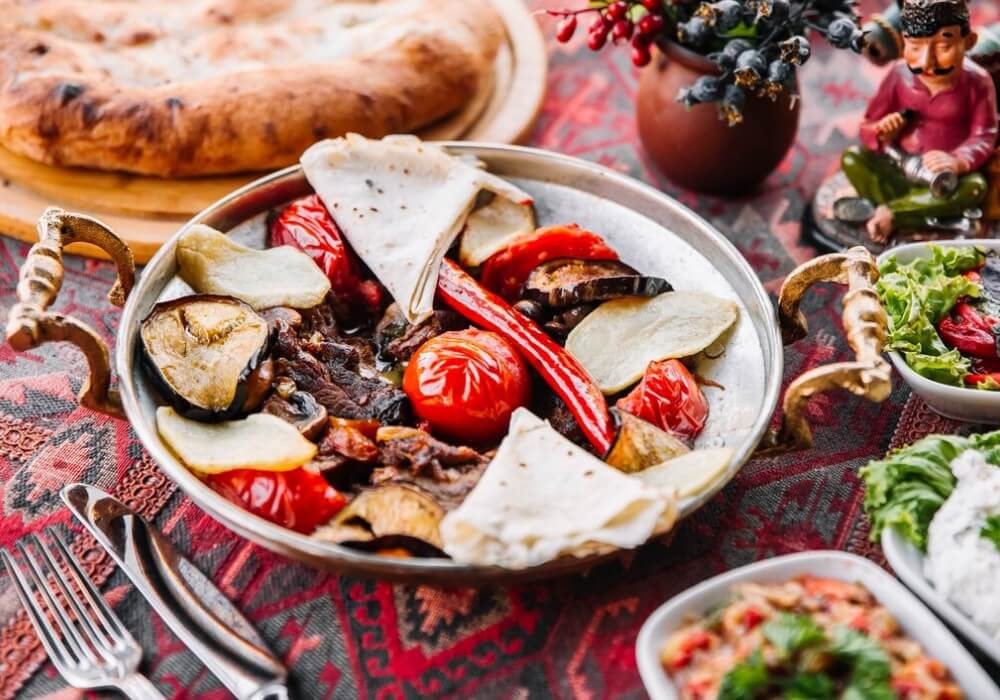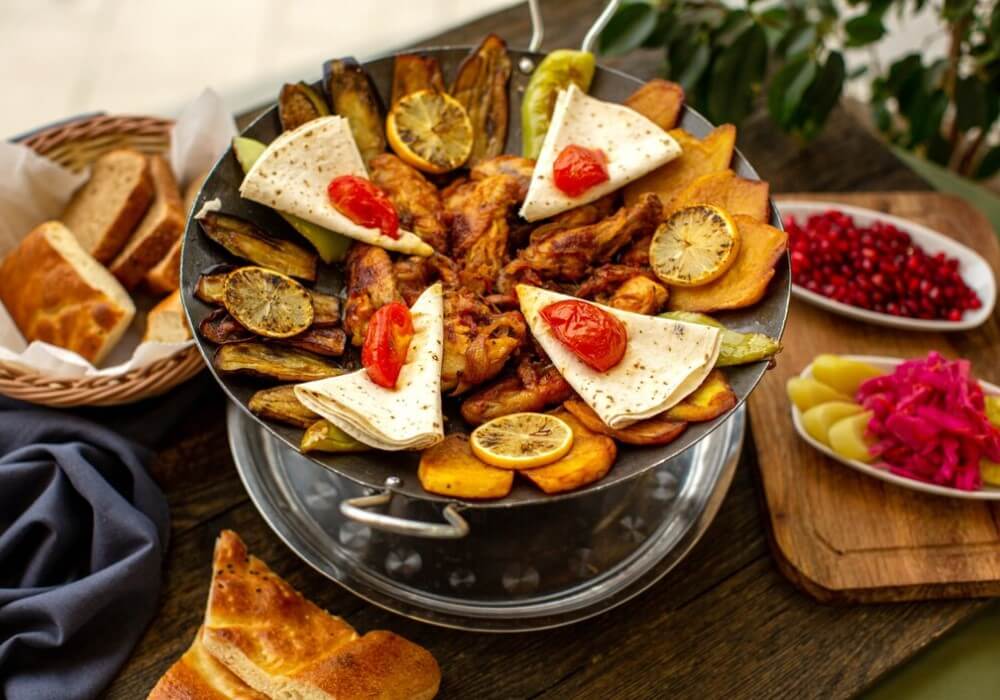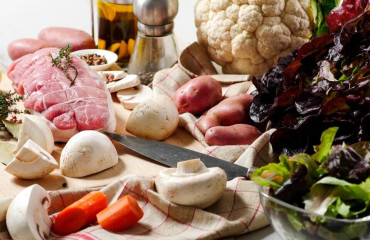Georgian cuisine holds a key place among the attractions of this country, serving as an important part of its culture and traditions. Eastern Georgia, bordering Iran, borrowed some culinary preferences from this neighbor, while Western Georgia traditionally leans towards Turkish and European cuisine. Despite these differences, the main recipes and cooking methods remain similar in both regions. Here, at the crossroads of East and West, where mountains meet the sea, culinary legend comes alive in every corner, from the snowy peaks of the Caucasus to the green valleys of Kakheti.
History of the development of Georgian cuisine
Many scholars believe that traditional Georgian dishes such as khachapuri, churchkhela, and khinkali originated as early as the 2nd millennium BCE. These dishes, rooted in ancient tribes inhabiting the territory of modern Georgia, have remained almost unchanged to this day.
In the Middle Ages, due to active trade, Georgian cuisine was enriched by the influences of neighboring countries and cultures. Spices and aromatic herbs from India and Persia, vegetables and fruits from the Mediterranean, became indispensable ingredients. This period saw the emergence of various types of meat and fish dishes and sauces.
From the 17th century onwards, during periods of intense warfare and political changes, the cuisine continued to adapt and evolve. It was during this time that recipes for many national sauces, such as satsivi, were born, and techniques for cooking meat and bread were perfected.
During the Russian Empire and the Soviet Union, Georgian cuisine continued to evolve, adapting and incorporating elements of culinary traditions from different peoples. During this time, Georgian cuisine became popular in many countries due to its unique taste and aroma.
Today, Georgian cuisine represents a unique blend of traditions and new trends. It continues to delight gourmets around the world with its classic dishes, while adapting to modern trends in healthy eating and experimenting with new ingredients and cooking techniques.

Main distinctive features of Georgian cuisine
Georgian cuisine is known for its combination of spicy and savory flavors. Meat is a staple of many dishes commonly found on Georgian tables. Walnuts and various herbs such as cilantro, basil, and tarragon are also commonly used in the cuisine, adding them to sauces, soups, and even pastries.
Georgian cuisine is divided into Western and Eastern. In the West, influenced by Turkey, dishes made from poultry are preferred, served with cornbread mchadi and cheese such as sulguni or Imeretian. Alcohol is often enjoyed with sweets like churchkhela and fruits. In the East, where the influence of Iran is felt, meat from beef and lamb is more commonly prepared, served with wheat bread. Strong drinks are enjoyed with pickled or salted vegetables and cheeses, such as kobian or Tush.
In the capital of Georgia, Tbilisi, both Eastern and Western culinary traditions are found. Famous regions in the West include Adjara and Samegrelo. Samegrelo, in particular, is famous for its spices, which are distributed throughout the country.
Special attention should be paid to the region's location as it directly influences the development of the cuisine. Thanks to its mild climate, the country is actively engaged in agriculture and the cultivation of various grape varieties, allowing Georgia to engage in winemaking and produce some of the highest quality wines in its niche. Connoisseurs surely remember Kindzmarauli, Saperavi, Rkatsiteli, Tvrdi and other varieties whose fame has spread worldwide.
National cuisine: the most famous Georgian dishes
Georgian cuisine is a vibrant fusion of flavors, aromas, and traditions that reflect the rich history of the country. Known for its hospitality, Georgia offers unique dishes that have won the love of gourmets around the world. Here are some of the most popular dishes that everyone should try:
- Khachapuri. Perhaps the most famous Georgian dish, khachapuri is a pie with a cheese filling that varies from region to region. The most famous is Adjarian khachapuri, resembling a boat with egg and butter on top.
- Khinkali. These dumplings with a meat filling are another culinary symbol of Georgia. Khinkali are traditionally made with various types of meat, including beef, pork, or lamb, and served with plenty of pepper.
- Churchkhela - is not only tasty but also a beautiful dessert, known as the Georgian "Snickers". These are nuts soaked in grape juice, which are then dried in the sun, forming a sweet and nutritious snack.
- Satsivi. This is a dish of poultry in a thick sauce made from walnuts and spices. Satsivi is often served at traditional holidays and family celebrations, especially on New Year and Christmas.
- Adjapsandali. This popular vegetarian dish includes eggplant, peppers, tomatoes, onions, and a variety of herbs and spices. Adjapsandali is often served in summer when vegetables are freshest.
- Lobio - a dish of boiled or stewed red beans, usually served with various spices and herbs. It can be served both cold and hot and is often accompanied by fresh Georgian bread.
- Kubdari. This is a meat pie, traditional for the mountainous region of Svaneti. Kubdari is filled with finely chopped meat (usually pork or lamb) and spices, creating an incredibly aromatic and hearty dish.
Each of these dishes is an important part of Georgian cultural identity and offers a unique culinary experience. Georgian cuisine is a celebration for the taste buds, and each dish deserves to be tried.

Conclusion: Georgian cuisine as a reflection of the nation's history and culture
Summing up the study of the history of Georgian cuisine, it can confidently be said that it is not just a reflection of the culinary preferences of the people, but also an embodiment of its history, culture, and spirit. Each dish carries with it centuries of history, and every spice and cooking method transports us to different epochs, opening doors to the past and allowing us to feel the connection of times.
Georgian cuisine, with its variety and richness of flavors, has developed under the influence of geographical, political, and cultural factors. It has adapted and evolved, absorbing the best from neighboring cultures while maintaining its uniqueness and authenticity. This journey through time and space, from ancient winemaking traditions to modern culinary innovations, demonstrates not only the creativity and skill of Georgian chefs but also a deep respect for their heritage.
It not only pleases the taste receptors but also fosters a sense of respect for traditions and culture. Studying the history of Georgian cuisine provides not only culinary but also cultural enrichment, reminding us that food is not just a means of satisfying hunger but also a powerful tool for social connection and cultural self-expression.
And for those who want to immerse themselves in the atmosphere of true Georgian hospitality and appreciate the richness of local flavors, I recommend visiting a Georgian restaurant where each dish is prepared according to ancient traditions and original recipes.









